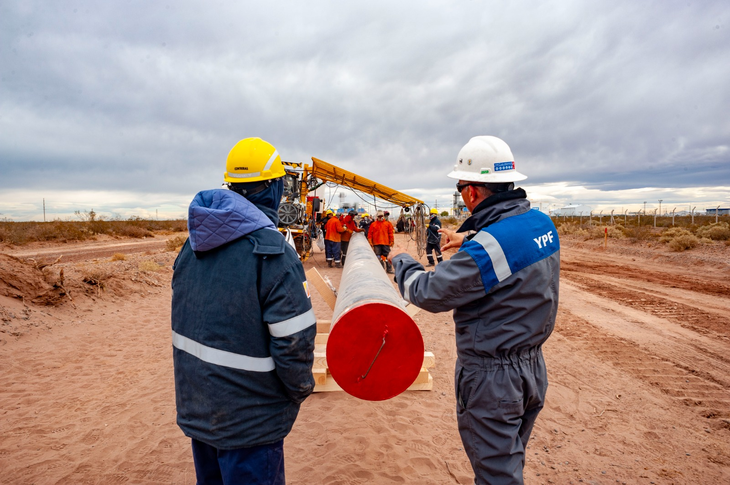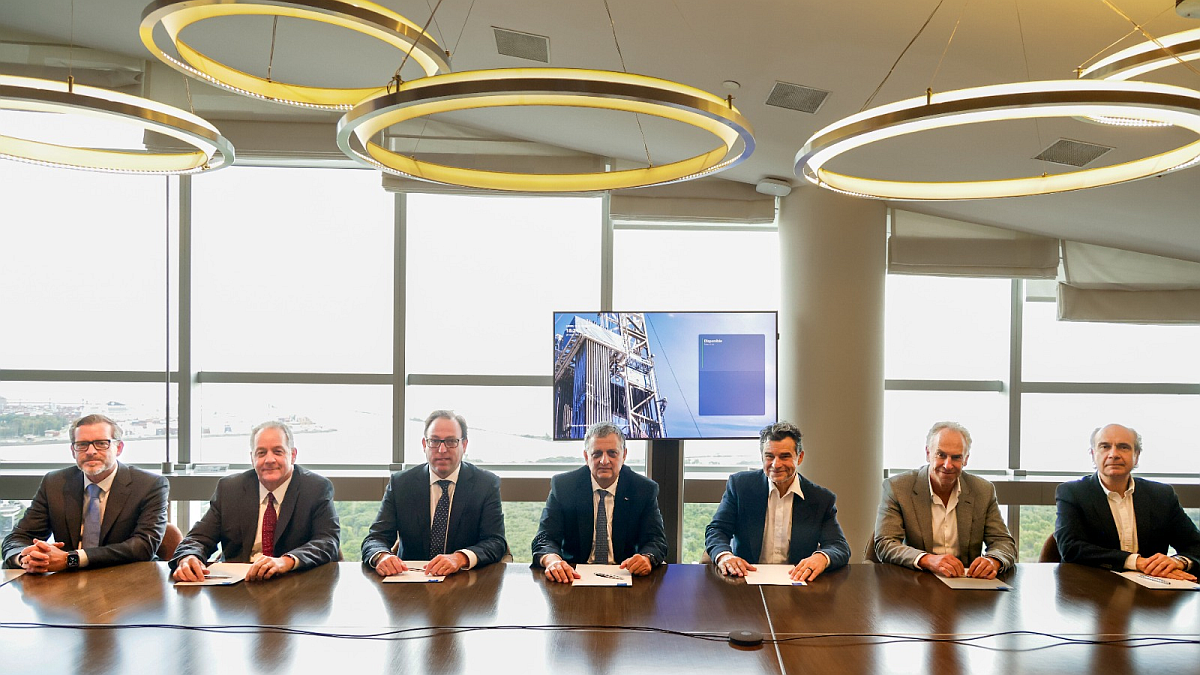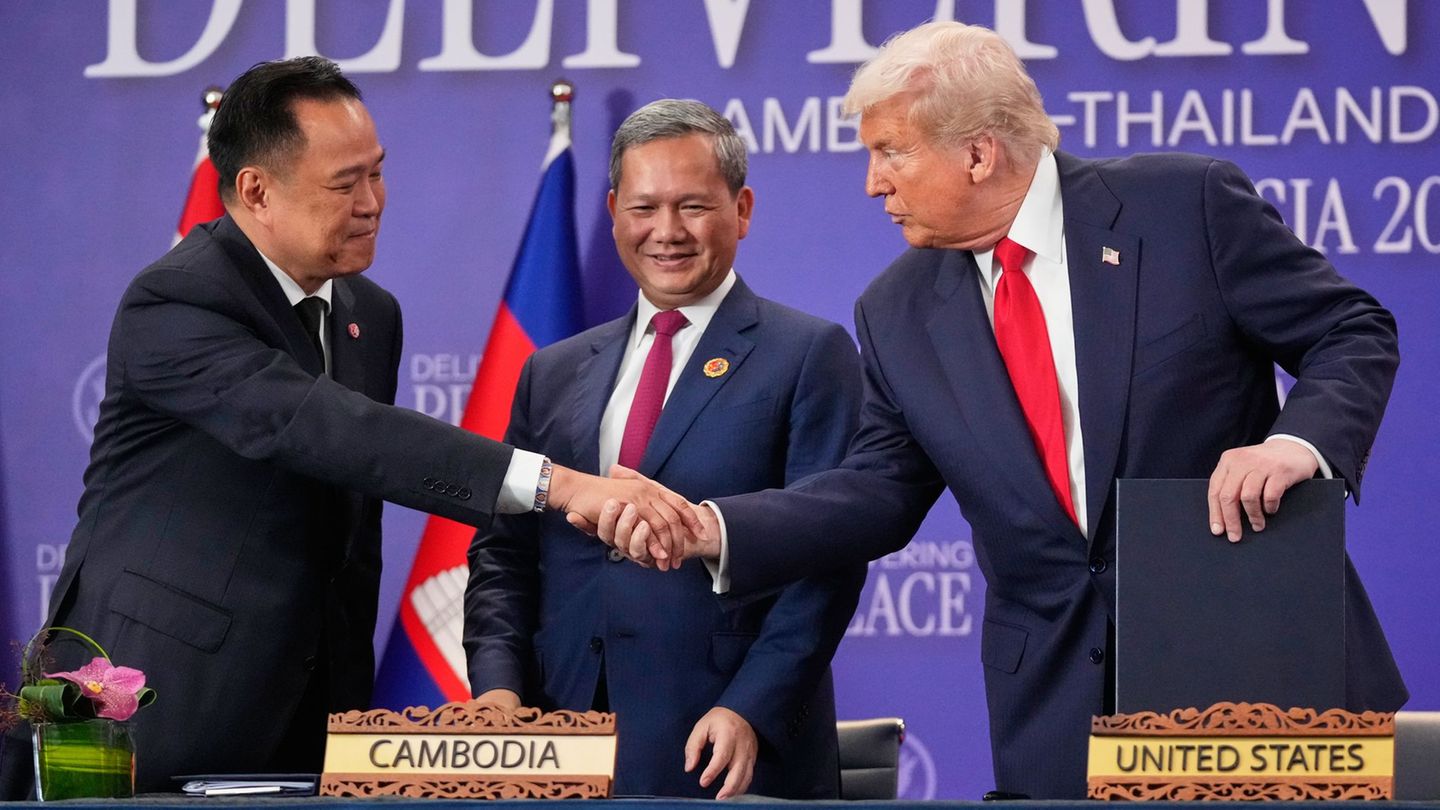The six shareholders of the Vaca Muerta Southern Pipeline (VMOS SA) They informed the National Securities Commission (CNV) of the approval of the construction of the project RIGI of US$3,000 million to export more than 550,000 barrels of oil per day from 2027 and the signing of an agreement for the transportation of crude oil.
“It is reported that at the VMOS board meeting held on December 13, the construction of the Vaca Muerta crude oil export pipeline was unanimously approved,” says the note signed by Margarita Chunresponsible for market relations at YPF SA, and which was accessed Energy Report.
In addition to the flag oil company, they also joined the VMOS Vista Energy Argentina SAU, Pampa Energía SA and Pan American Sur SA. The companies Chevron Argentina SRL, Pluspetrol SA and Shell Argentina SA. They also joined with quotas provided by VMOS SA.
The project will have an extension of 437 kilometers, will have a loading and unloading terminal with interconnected monobuoys and a tank and storage yard.
Dead Cow Southern Pipeline VMOS.jpg
As detailed by YPF, construction will begin “immediately”, with the objective of achieving its mechanical completion during the fourth quarter of 2026 and the beginning of commercial operation on July 31, 2027.
How much oil will each company be able to export?
The YPF note reported that the four main shareholders committed 275,000 barrels per day capacity and that the company transferred to Chevron, Pluspetrol and Shell Argentina, among others, at least 230,000 additional barrels per day of firm transportation.
As revealed by this media, the design capacity of the Vaca Muerta Oleoducto Sur will allow it to transport up to 550,000 barrels per daywhich may be increased up to 700,000 barrels per day if necessary.
Vaca Muerta Sur pipeline

YPF
To make the distribution of quotas official, the partners signed a firm crude oil transportation agreement with VMOS in the terms of Decree No. 115/2019, in order to guarantee the terms and conditions through which you will use the transportation, storage and dispatch services of crude oil.
The agreement was signed by Gerald Free, Planning and Finance Manager for LATAM at Chevron, Adrián Vila (Pluspetrol), Germán Burmeister (Shell Argentina), Horacio Marín (YPF), Miguel Galuccio (Vista), Marcelo Mindlin (Pampa Energía) and Daniel Ciaffone, Vice President of Integrated Supply & Trading of PAE.
In the fine print, it was also clarified that YPF will have a committed transportation capacity of 120,000 barrels per day and a minority shareholding in VMOS, symmetrical to its participation in the project’s firm transportation contracts. This was a point of discussion among participants, who did not want the majority-state private company to control the pipeline and have the export volumes to piacere.
A project that entered the RIGI
In the note, the shareholders assure that the project represents “the largest hydrocarbon export infrastructure in Argentina and will require an investment of approximately US$3,000 million, which will be financed by contributions from shareholders and local and/or foreign financing to be granted to VMOS during 2025.”
At the same time, the shareholders revealed that they will seek to apply the VMOS to the “Incentive Regime for Large Investments” (RIGI), in accordance with Law 27,442 and regulatory decree No. 794/2024. The project requested membership in the RIGI November 15, 2024and from there there are 45 business days for approval or rejection.
However, in the event of any query or request for additional information requested by the authorities, that time stops running and stops. Thus, project promoters can carry out additional studies, reports or analyzes without pressure from deadlines.
Through an official communication, YPF He stressed that the completion of this transportation work is strategic for the development of Vaca Muerta and, together with other initiatives, will open the door for export with the objective of achieving US$15 billion in annual income for the country in the coming years, which with its expansions could reach more than US$20 billion.
Source: Ambito
I am an author and journalist who has worked in the entertainment industry for over a decade. I currently work as a news editor at a major news website, and my focus is on covering the latest trends in entertainment. I also write occasional pieces for other outlets, and have authored two books about the entertainment industry.




